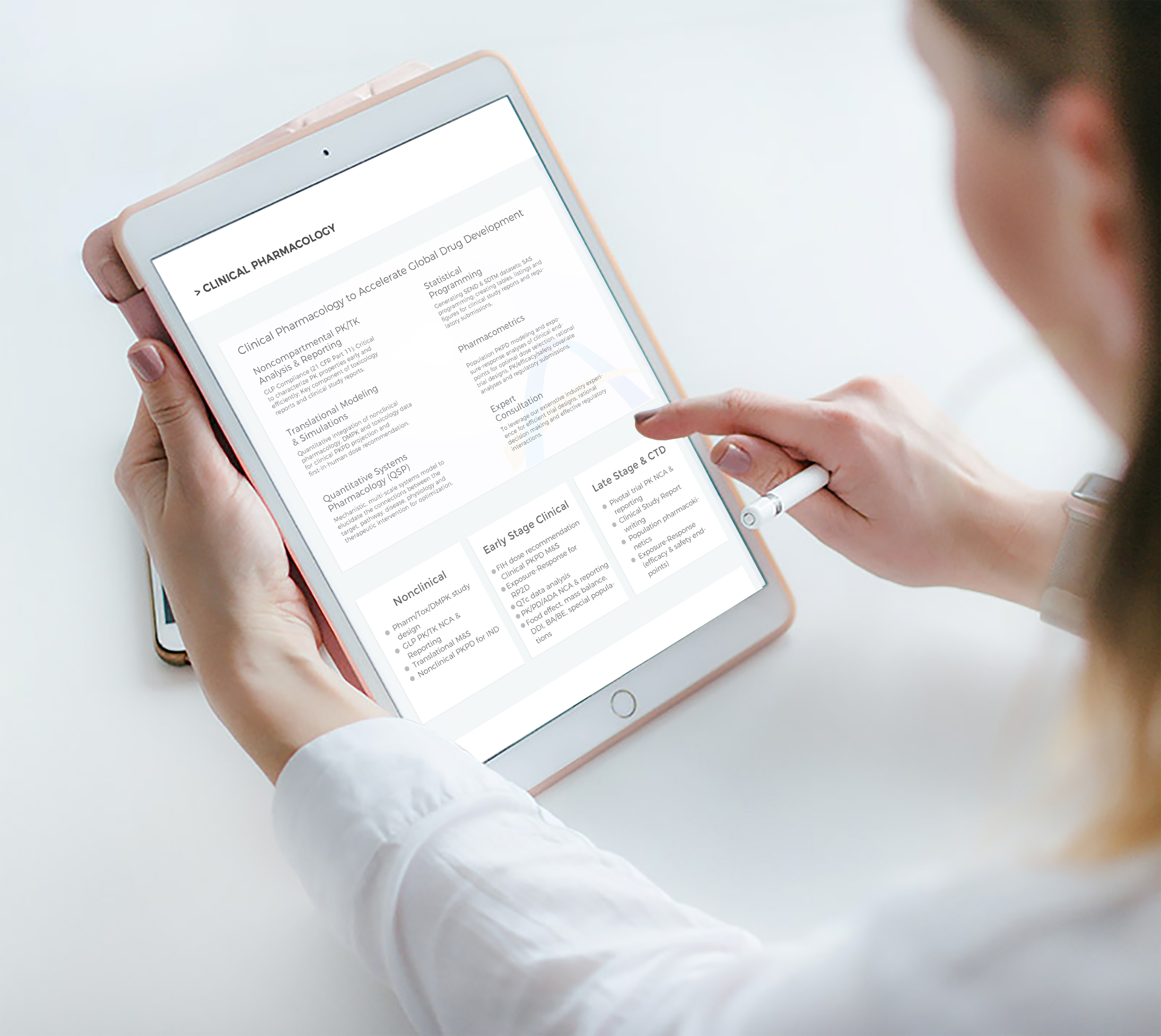Where Science Meets Strategy: Elevate Your Drug Development Program with Clinical Pharmacology
Developing dosing strategies for drug candidates involves a multidisciplinary approach that combines pharmacology, clinical expertise, data analysis, and regulatory considerations. Expert clinical pharmacologists use a systematic process to determine the optimal dosing regimen for a new drug.
 \
\
Developing dosing strategies for drug candidates involves a multidisciplinary approach that combines pharmacology, clinical expertise, data analysis, and regulatory considerations. Expert clinical pharmacologists use a systematic process to determine the optimal dosing regimen for a new drug. Here's an overview of how we approach this task:
Pharmacokinetic and Pharmacodynamic Analysis:
- Clinical pharmacologists start by understanding how the drug is absorbed, distributed, metabolized, and eliminated (pharmacokinetics) and how it interacts with its target (pharmacodynamics).
- This analysis helps determine factors such as the drug's half-life, time to reach peak concentration, and the relationship between drug concentration and therapeutic effect.
Preclinical and Clinical Data Translation:
- Data from preclinical studies and early-phase clinical trials provide insights into the drug's behavior in humans.
- Pharmacologists integrate this data to create a model that predicts how the drug will behave in different scenarios.
Population Variability:
- Individual patients can vary in their response to a drug due to factors like genetics, age, weight, and health status.
- Clinical pharmacologists consider population variability to develop optimal dosing strategies that are effective and safe across diverse patient groups.
Therapeutic Window and Target Exposure:
- Every successful drug has a range of concentrations that provide therapeutic benefit without causing excessive toxicity.
- Clinical pharmacologists aim to define this "therapeutic window" by considering the minimum effective concentration and exposure at the maximum tolerated dose.
Exposure-Response Relationships:
- We analyze exposure-response relationships, which show how drug concentration relates to the magnitude of therapeutic effect or adverse events.
- This helps determine the level of drug exposure needed to achieve the desired outcome.
Efficacy and Safety Goals:
- The desired therapeutic effect guides dosing strategies. We evaluate how different dosing regimens influence the likelihood of achieving the intended efficacy outcome.
- Safety is paramount. Clinical pharmacologists assess the potential for adverse effects and design dosing regimens that minimize the risk of harm to patients.
Adaptive Dosing Strategies:
- We develop adaptive dosing strategies that take into account patient-specific factors, so that dosing can be modified over time based on how the patient responds.
- This approach can enhance efficacy while minimizing adverse effects.
Regulatory Guidelines:
- Regulatory agencies provide guidelines on dosing strategies, especially in the context of clinical trials and drug approvals.
- Clinical pharmacologists ensure that dosing strategies align with regulatory standards worldwide.
Iterative Process:
- Developing dosing strategies is often an iterative process. As more data becomes available from clinical trials, dosing regimens may be refined to optimize efficacy and safety outcomes.
In essence, expert clinical pharmacologists use a combination of scientific understanding, data analysis, and clinical expertise to design dosing strategies that maximize therapeutic benefit while minimizing risks. It's a meticulous process that requires a deep understanding of pharmacology, drug behavior, and patient variability.


